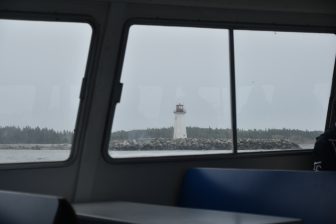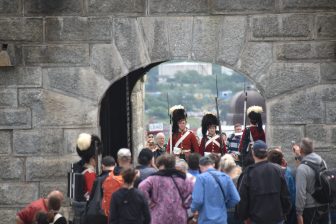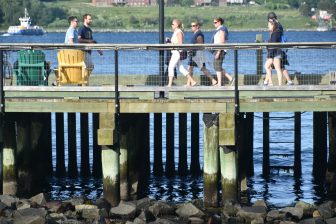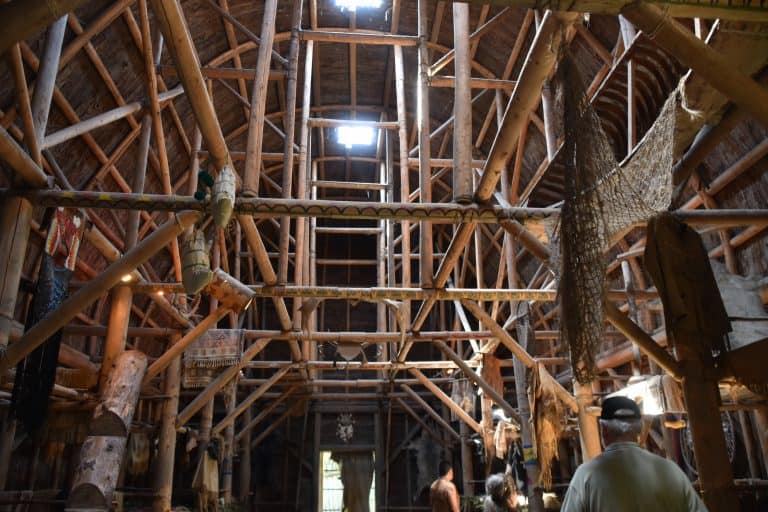
[ July 2019 ] During our tour in Onhoüa Chetek8e which was showing the Huron People‘s traditional way of living in Wendake Village in the suburbs of Quebec City in Canada, we visited their traditional house called Long House.
In one Long House, a few families lived together, and there were no walls between the family spaces.
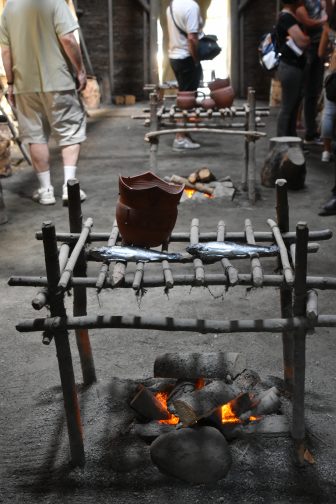
The house was wooden and covered with elm barks.
Its width was about 7 metres, height was 7-8 metres and as for the length it was from 10 metres up to 70 metres, depending on the size of the clan.
In the middle of it there was a sort of corridor and there were fireplaces.
There were three fireplaces in the Long House we visited.
That means that there were six families lived in this house.
The fire was always on and protected by the people.
On both side of the corridor, there were double-decker shelves.
The first level was their bed and the upper deck was the storage space.
There were only three windows and they were on the ceiling, so the inside of the Long House was quite dark.
Interestingly, Huron People’s marriages were decided by women.
When a girl in a Long House becomes marriageable age, a man comes from other clan and starts living with her and her family.
After three weeks’ trial, if he gets on with them OK, they will marry, but if not, he will be sent back to his clan.

Not only the marriage issue, the Wise Mother of the clan apparently had enormous power for everything of their life.
We saw a cot as well as a mortar to grind corns in the Long House.
According to a study, Huron People lived in this kind of Long House from around 500 AD until middle of the 18th century.
As for the foods, they kept them by drying them or smoking them.
We saw how they dried and smoked them and one of the tourists asked to our guide, Brian “Didn’t any animals take away those foods dried on the board so openly?”.
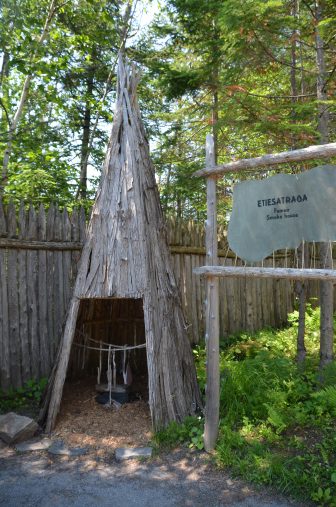
He answered “If there was an animal, we ate it. We ate any kind of animals, so there were no animals to steal our foods”.
We could take photos anywhere in Onhoüa Chetek8e, apart from one holy hut and we went in there.
Huron People had three kinds of shamans : one to cure physical illnesses, one to cure mental illnesses and when those two could not do anything, the third one with a horrifying mask came in and acted as an exorcist.
Those three had to be three different people.
Brian told us how the Dream Catcher works, too.
They hang one above the bed.
The good dreams stay in the feather part on the lower part, but the bad dreams go up to the upper web and they are trapped there.
When the morning sun shines on the small stones among the web, the bad dreams will be destroyed and disappeared.
There was another thing which looked similar to a Dream Catcher but this one was to protect people from evil spirits.
This had a cross instead of the web and they used to hang one at an entrance of the house.
After this holy hut, Brian showed us a canoe, which was an important product for them.
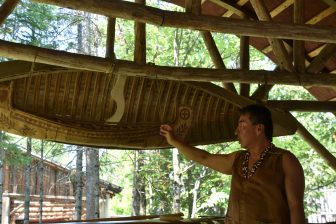
They hand made them with birches and sold them to French and British.
He also showed their snow shoes, too.
And that was the end of the tour.
I have said that tipping is very common and important in Canada, but Brian left us soon after he finished and we did not have a chance to give him a tip.
He had a graceful attitude.

